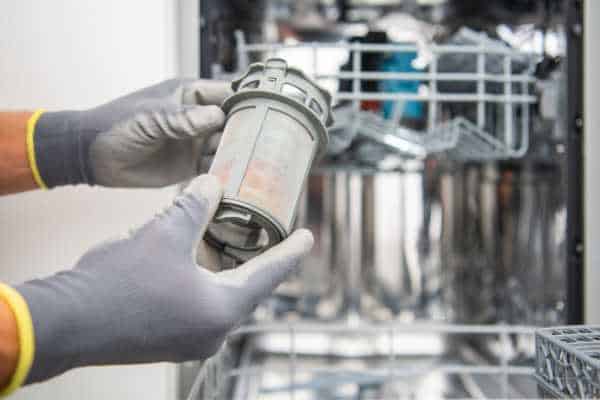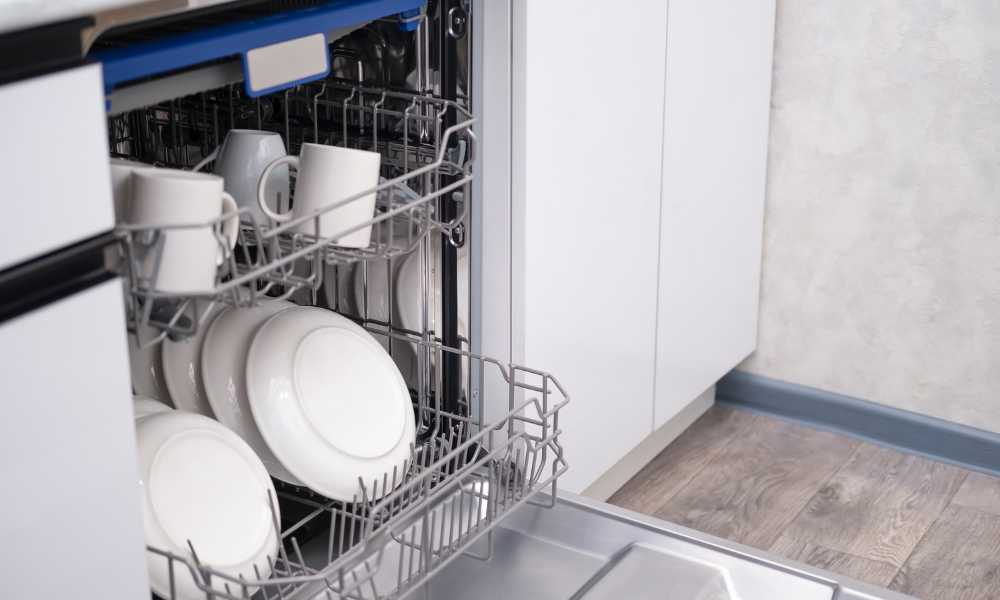If you’re considering upgrading your kitchen, you may be wondering, “What is a built-in dishwasher?” A built-in dishwasher is a permanent appliance that’s integrated into your kitchen cabinetry, providing a seamless and efficient way to clean your dishes. Unlike portable models, built-in dishwashers are designed to stay in place, offering better aesthetics, more capacity, and advanced features. This type of dishwasher connects directly to your home’s plumbing and electrical systems, making it a more permanent and space-saving solution. In this article, we’ll explore the benefits, features, installation process, and how to choose the best built-in dishwasher for your home, ensuring you make an informed decision.
The Key Features of a Built-in Dishwasher

A built-in dishwasher offers several key features that make it a popular choice for modern kitchens. These dishwashers are designed to be integrated seamlessly into your cabinetry, providing a sleek, space-saving solution. Most models come with multiple wash cycles, adjustable racks, and large capacities, allowing for efficient cleaning of dishes, pots, and pans. Energy efficiency is another major feature, with many built-in dishwashers rated for low water and electricity consumption. Additionally, built-in dishwashers tend to operate more quietly than portable models, making them ideal for open-concept living spaces. With advanced technology, they also offer features like smart connectivity, allowing remote control via mobile apps for added convenience.
How Built-in Dishwashers Differ from Portable Models
Built-in dishwashers are permanently installed into your kitchen cabinetry, offering a sleek, space-saving solution. Unlike portable dishwashers, which are mobile and require manual connection to the sink, built-in models are connected directly to your home’s plumbing and electrical systems. This setup provides more capacity, as built-in units can fit larger loads and are typically more efficient in terms of water and energy usage. Portable dishwashers, on the other hand, are ideal for kitchens with limited space or renters who cannot make permanent installations. While both offer convenience, built-in dishwashers are generally considered more durable and capable of handling everyday kitchen demands with ease.
Advantages of Choosing a Built-in Dishwasher

A built-in dishwasher offers several key advantages for homeowners. First, its permanent installation saves space, making it ideal for kitchens with limited room. Built-in models often have a larger capacity compared to portable versions, allowing for more efficient dishwashing. They also provide a cleaner, more organized look by blending seamlessly with kitchen cabinetry. In addition, built-in dishwashers tend to be more energy-efficient and quieter, providing a smoother, more eco-friendly experience. The advanced features, such as multiple wash cycles and sensors for optimal cleaning, make them more effective at removing tough stains. With a built-in dishwasher, you can enjoy convenience, durability, and a higher level of performance in your kitchen.
Types of Built-in Dishwashers: Full-Size vs. Compact
When choosing a built-in dishwasher, it’s important to understand the difference between full-size and compact models. Full-size dishwashers are the most common, typically 24 inches wide, and offer greater capacity, making them ideal for large households or frequent entertainers. On the other hand, compact dishwashers are smaller, usually around 18 inches wide, and are perfect for apartments, smaller kitchens, or those with limited space. While both types provide excellent cleaning power, compact models may require more frequent loads. Consider your kitchen size, family needs, and available space when selecting between a full-size or compact built-in dishwasher to ensure optimal performance and convenience for your home.
Installation Process for a Built-in Dishwasher

Installing a built-in dishwasher requires careful planning and precision to ensure proper function and integration into your kitchen. First, measure the space to ensure your appliance fits within the designated area. The dishwasher must be connected to your home’s plumbing for water supply and drainage. You’ll also need to connect the appliance to an electrical outlet, which typically requires a dedicated circuit. If you’re not familiar with plumbing or electrical work, it’s recommended to hire a professional installer to avoid potential issues. Proper installation ensures the dishwasher operates efficiently and prolongs its lifespan. Once installed, perform a test run to check for leaks and proper drainage before use.
How to Choose the Right Built-in Dishwasher for Your Kitchen
Choosing the right built-in dishwasher for your kitchen depends on several factors, including size, features, and energy efficiency. Start by measuring the available space to ensure the dishwasher fits seamlessly within your cabinetry. Consider the number of place settings it can accommodate to match your household’s needs. Look for features such as adjustable racks, noise levels, and wash cycles that suit your preferences. Energy-efficient models can help save on utility bills while being environmentally friendly. Additionally, check reviews for reliability and durability. By focusing on these aspects, you’ll select a built-in dishwasher that fits both your kitchen and lifestyle, providing convenience and performance for years.
Energy Efficiency in Built-in Dishwashers

Energy efficiency is a key factor to consider when choosing a built-in dishwasher. These appliances are designed to use less water and electricity compared to older models, helping reduce your household’s overall energy consumption. Modern built-in dishwashers often come with energy-saving settings, such as eco-wash cycles, which further minimize energy use while still delivering effective cleaning results. Additionally, many models are certified by ENERGY STAR, meaning they meet strict energy efficiency standards. By investing in an energy-efficient built-in dishwasher, you not only lower your utility bills but also contribute to a more sustainable environment, making it a smart choice for both your budget and the planet.
Maintaining and Caring for Your Built-in Dishwasher
Proper maintenance and care of your built-in dishwasher can significantly extend its lifespan and improve its performance. Regularly clean the filter to prevent buildup and ensure efficient drainage. Check the spray arms for any blockages that could affect water circulation. It’s also essential to wipe down the door seal to avoid mold and mildew growth. Use a dishwasher cleaner periodically to remove residue and keep the interior fresh. Avoid overloading the dishwasher, as this can strain the motor and reduce cleaning efficiency. Lastly, ensure that the dishwasher’s drainage system is free from debris to maintain optimal function. Following these steps will help your built-in dishwasher run smoothly for years.
Common Issues with Built-in Dishwashers and How to Fix Them

Built-in dishwashers, while efficient, can encounter common issues over time. One of the most frequent problems is poor drainage, which may result in water pooling at the bottom of the appliance. This could be caused by a clogged drain or a malfunctioning pump, and can usually be fixed by cleaning the filter or inspecting the drain hose for blockages. Another issue is a noisy dishwasher, often caused by worn-out spray arms or a defective motor. Regular maintenance, such as cleaning the spray arms and checking the motor, can resolve these problems. For more complex issues, it’s recommended to consult a professional to ensure your built-in dishwasher operates optimally.
Are Built-in Dishwashers Worth the Investment?
Built-in dishwashers can be a worthwhile investment for many homeowners. These appliances offer increased convenience, efficiency, and long-term savings. Unlike portable models, built-in dishwashers are more durable, can handle larger loads, and often come with energy-efficient features that lower utility bills. They also add value to your home by providing a sleek, integrated look that complements modern kitchen designs. Additionally, the convenience of having a permanent dishwasher eliminates the need for extra storage space and manual dishwashing. Although the initial cost may be higher than portable models, the benefits of better performance, increased durability, and energy savings make built-in dishwashers a smart investment for most households.
Conclusion
Understanding “What is a Built-in Dishwasher” helps you make an informed decision when upgrading your kitchen appliances. Built-in dishwashers offer a permanent, space-saving solution that enhances both the functionality and aesthetics of your kitchen. With features like energy efficiency, large capacity, and quiet operation, they provide significant long-term value. While the initial investment may be higher compared to portable dishwashers, the benefits of durability, convenience, and improved home value make them a worthwhile choice for most homeowners. Whether renovating your kitchen or replacing an old model, a built-in dishwasher is an excellent addition that will serve your household for years to come.

